Coal in Greece | Research Interests | Geo-Energy Resources Team
Coal-forming conditions prevailed in Greece since the onset of the Cenozoic era. Thin benches of Permo-Carboniferous hard coal occur in the coastal sediments of Chios Island (#27), on Central Evia (#16) and in Monemvasia (SE Peloponnese; #24).
Thin beds of sapropelic and subbituminous coals occur in the Eocene flysch in the western part of the country, as well as in the molasse of Thrace (#1 and 2). They formed mainly in paralic basins under estuarine or deltaic conditions. Similar conditions prevailed during Oligocene, when thin coal-bearing layers formed in the molasse sediments of the Middle Hellenic trough (#11), as well as in Thrace. Moreover, there are a few coal beds of lacustrine-fluvial origin in eastern Macedonia and Thrace. The Eocene and Oligocene coals generally show high calorific values, but their reserves are limited and thus, exploitation is not profitable.
The intense post-alpine faulting tectogenesis during Neogene and Quaternary times, caused the formation of many intermontane and paralic basins. The sedimentary filling of the basins contains lignite to subbituminous coals, which accumulated in topogenous mires (fens) due to terrestrialization of lakes and/or paludification. In the Miocene, lignite deposits formed in Vevi, Achlada and Lofi in the Florina basin (#6); in Vegora and Komnina in the Ptolemais basin (#7); and in Moschopotamos (#10). All the aforementioned deposits derived mainly from forest swamps located in intermontane basins. The deposits of Ptolemais, Amyntaeo, Lava-Kozani (#7), Elassona (#9), and Rhodos (#28), formed during Pliocene in fens in intermontane basins, while those of Preveza (#13) and Pyrgos-Olympias (#21) are deltaic to estuarine. All were derived from reed-sedge vegetation. Quaternary lignite deposits are these of Drama (#3), Ioannina (#12), Kandanos (#25), and Megalopolis (#23).
The Greek lignite reserves are 6.7 Gt, of which 3.9 Gt are economically recoverable. The Florina-Amyntaeo-Ptolemais-Kozani tectonic graben in western Macedonia (#6-8) includes about 2/3 of the reserves. Annualy 66 Mt lignite are produced mainly for power generation.






